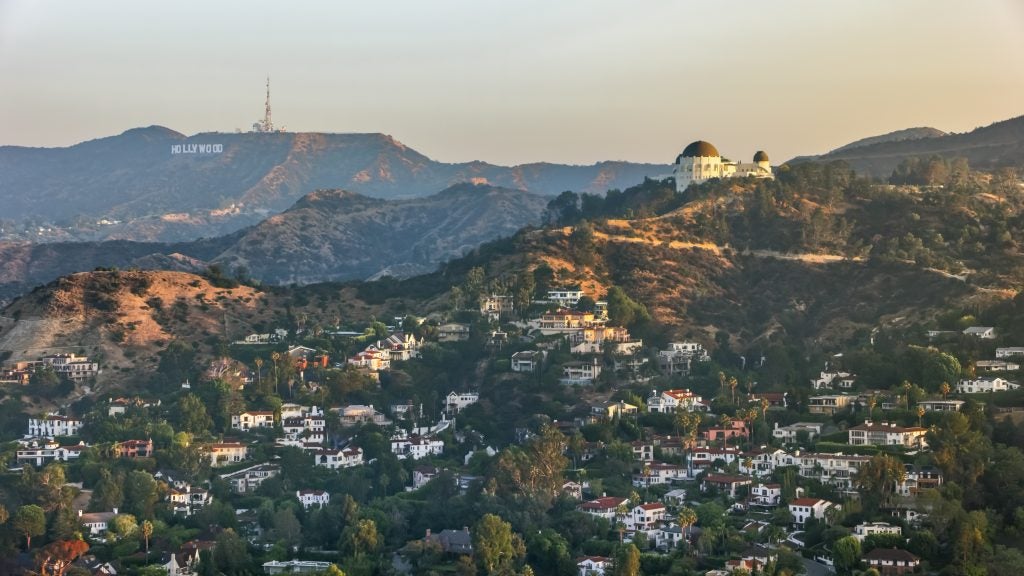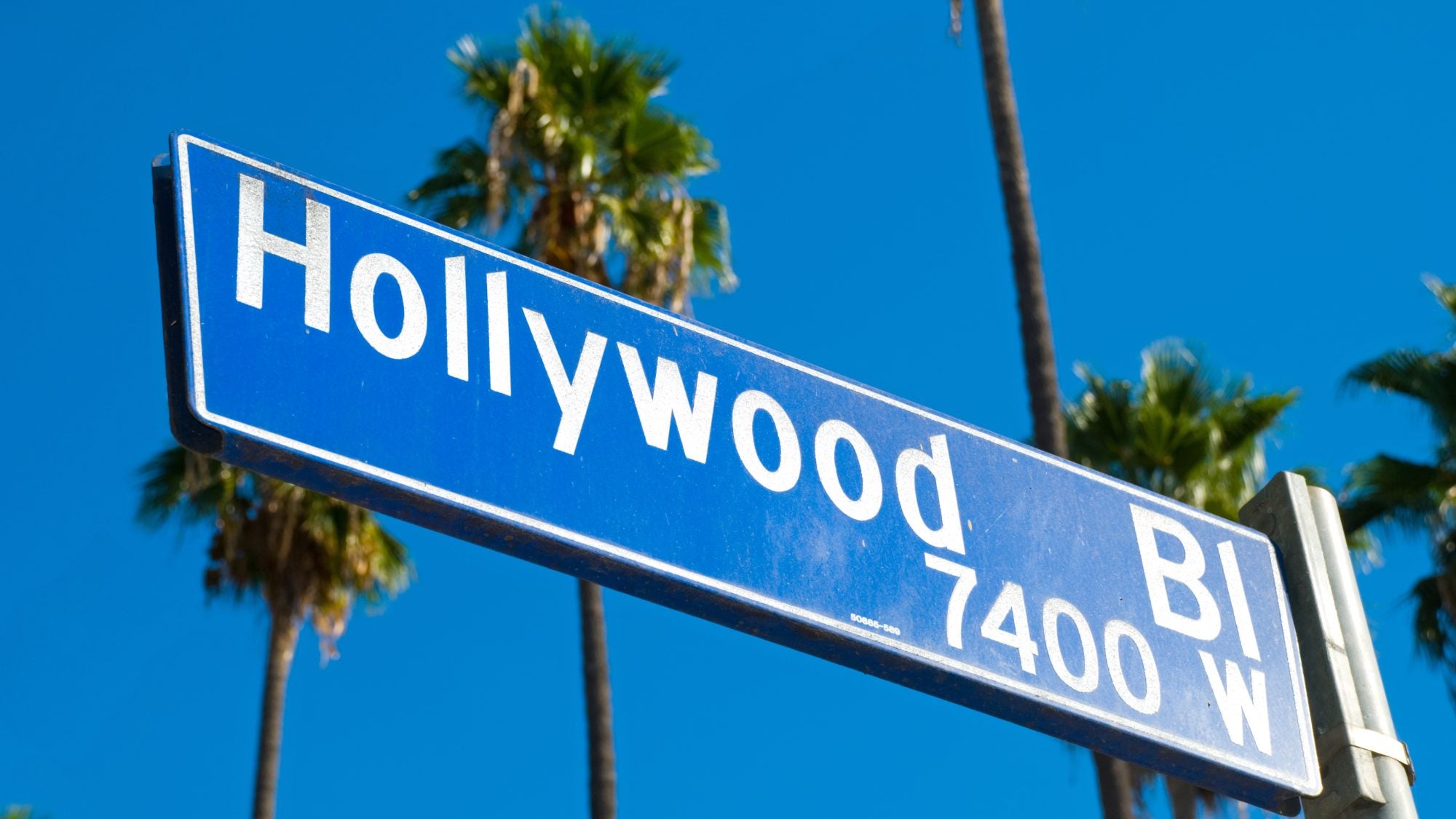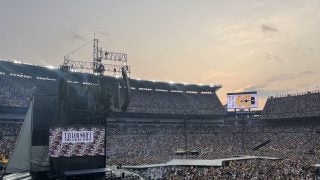After three months of strikes in Hollywood, the Writers Guild of America went back to the negotiating table with studio executives in August. But negotiations have seemingly reached an impasse after the entertainment studios publicly released the details of their latest proposal in an attempt to appeal to union members directly.
The writers’ strike comes amid the ongoing strike by over 150,000 actors in the Screen Actors Guild–American Federation of Television and Radio Artists (SAG-AFTRA). It’s the first time that both unions have striked simultaneously since 1960.

“The writers and actors strike is the culmination of long-simmering tensions,” said Catherine Tinsley, a professor of management in the McDonough School of Business. “Strikes are costly for both sides, and usually the flavor of the outcome is determined by who suffers greater costs during the strike versus who can hold out the longest.”
Hollywood is not the only industry experiencing labor tensions. Just this week, UPS and the International Brotherhood of Teamsters reached a tentative agreement after the union representing 340,000 UPS employees threatened to go on strike.
In Hollywood, The strikes have paralyzed the entertainment industry, shuttering production sets, postponing the Emmy Awards and stalling multiple future blockbuster movies, including films in the Star Wars and Avatar universes.
To better understand what’s going on behind the screen, we turned to Tinsley, an expert in business and conflict negotiations, to explain the goals of the unions and studios, what leverage each side has and how these strikes could impact fan-favorite TV shows and films.
Ask a Professor: Catherine Tinsley on Strikes and the Future of Hollywood
As an expert in negotiations and dispute resolution, could you give us a high-level view of the current strike between the Hollywood studios, actors and writers?
The writers and actors strike is the culmination of long-simmering tensions. Factors contributing to this unrest include significant wage disparities, worsening working conditions and perceived inequities in residual payments from digital platforms. Writers and actors are also naturally worried about the security of their jobs with the growing capabilities of generative artificial intelligence.
The WGA and SAG-AFTRA have been arguing for improved contracts for years. Issues of pay scale in relation to streaming services became particularly contentious as these platforms surged in popularity, yet writer and actor compensations have not changed.
How much leverage do the actors and writers actually have?
The actors and writers have power because their unions can engage in collective bargaining and have strike funds that can be used to support individual members for a time.
The unions themselves essentially have three sources of power. The first is their members’ creative talent — studios cannot produce shows and films without writers or actors. The second source of power is that other labor unions will tend to be sympathetic. The Directors Guild, Producers Guild and two heavyweights, the International Brotherhood of Teamsters and the AFL-CIO [American Federation of Labor and Congress of Industrial Organizations], have all expressed their support. The third source of power is their public personas, particularly the lauded actors who can sway, at least for a time, public opinion. Indeed, there are several politicians who have supported this strike from President Biden to the mayor of Los Angeles.
What about the studios — how much leverage do they have?
Studios have significant leverage in the entertainment industry due to their financial power, control over production and distribution, as well as usually owning the intellectual property. The studios decide which movies and TV shows get produced. They ultimately control what gets made.
They also have the power to hire talent, not just the actors on-screen, but also directors and other off-screen personnel. They can influence key creative decisions, including approval of scripts, cast members and directors. Finally, many studios own or have partnerships with various distribution channels — theaters, TV networks, streaming platforms — enabling them to control how and where content is released.
Are there any diverging interests between the WGA and SAG-AFTRA?
Actors and writers do have different roles and concerns, which could potentially be exploited by studios. First, actors and writers tend to have different compensation structures. Writers typically receive upfront payment and residuals based on reruns and syndication, whereas actors might negotiate for a percentage of the film’s gross profit. Studios might exploit these differences in negotiations, yielding to the demands of one group while resisting those of the other.
Writers and actors also tend to have different working conditions. Actors are more concerned about on-set conditions, whereas writers tend to be more focused on issues like creative control. These differing interests could be used by studios to negotiate separate deals.
However, it’s important to note that these unions have a common interest in improving the overall working conditions and compensation in the industry. Therefore, while studios might attempt to exploit diverging interests, the unions often present a united front on key issues, making it harder for studios to play one against the other.

What strategies do the studios have in their toolkit to bring actors and writers back to the negotiating table?
Studios can offer to meet some of the demands of the unions, such as higher wages, better working conditions or more favorable residual arrangements, especially for digital platforms. Studios can also offer profit participation or back-end deals to key talent, giving them a percentage of the profits on successful films or series. This can be a strong incentive to return to work.
Finally, studios might involve the public. Here studios might try strategies to sway public opinion in their favor, pressuring unions to return to negotiations. If the public begins to blame the actors and writers for the stale programming on their viewing platforms, this could pressure the actors and writers back to the table. Studios might also look for temporary alternatives, like hiring non-union workers or focusing on projects that are less affected by the strike like game shows, reality TV and, of course, re-runs. This can buy them time and reduce immediate losses.
How could public opinion shape the outcome of the strikes? Could audiences sour on celebrities once they start experiencing significant delays of their favorite content?
If audiences sympathize with the actors and writers, their support can put pressure on the studios to meet the unions’ demands. On the other hand, if the public perceives the demands as unreasonable, pressure could be placed on the unions to return to work.
Who wins in the court of public opinion largely depends on how effectively each side communicates its stance. If actors and writers can effectively convey how their demands resonate with most Americans — fair compensation, better working conditions and fears of replacement by AI — they will likely retain audience sympathy despite disruptions. Moreover, celebrities often have large social media followings and can leverage these platforms to share their perspectives directly with fans.
How long do you think the strike will last? And, in your estimation, what do you think the outcome might be?
I think it is possible the strike could last quite a while. The guilds have strike funds that can support their members, and the public is not likely to feel the impact of this strike right away. Although production has halted on several films and TV shows, there is generally significant lag time between production and the release of content. This lag means that there are still products in the pipeline that can be released while the strikes continue.
In an entertainment ecosystem now dominated by streaming giants over television networks, how could these strikes shake up the industry’s business model?
The rise of streaming services has already changed the entertainment industry’s business model. There could be some benefits that come from this strike. Traditional compensation models, such as residuals from reruns, are less applicable to streaming services that offer on-demand viewing. Strikes could force a revision of these models to better suit digital platforms, potentially leading to new standards for compensating talent in the streaming age.
Streaming platforms often release entire seasons at once, which changes production timelines and working conditions. Strikes may push for better working conditions and schedules tailored to this new release pattern. If the strikes result in better wages and conditions for actors and writers, this could influence where talent decides to work. Streaming giants, with their substantial resources, might become even more attractive for top talent.
The strikes could also potentially disrupt the content production pipeline of streaming giants, leading them to acquire more international or user-generated content. Smaller studios might struggle in this vacuum, which could lead to larger studios and streaming services acquiring smaller ones.
Of course the structural impact of this strike depends on how long parties hold out and the extent to which the demands of the unions are met. The longer the strike, the greater the potential for significant industry changes, for better or for worse.



